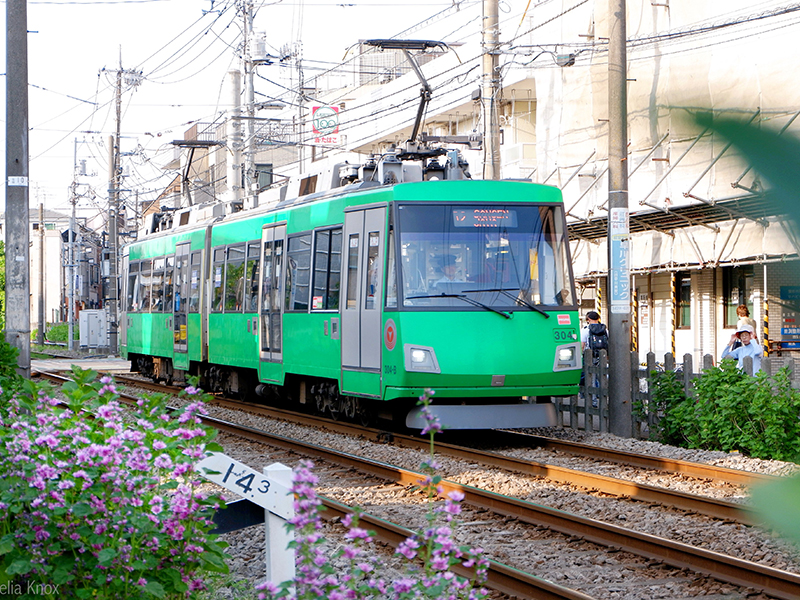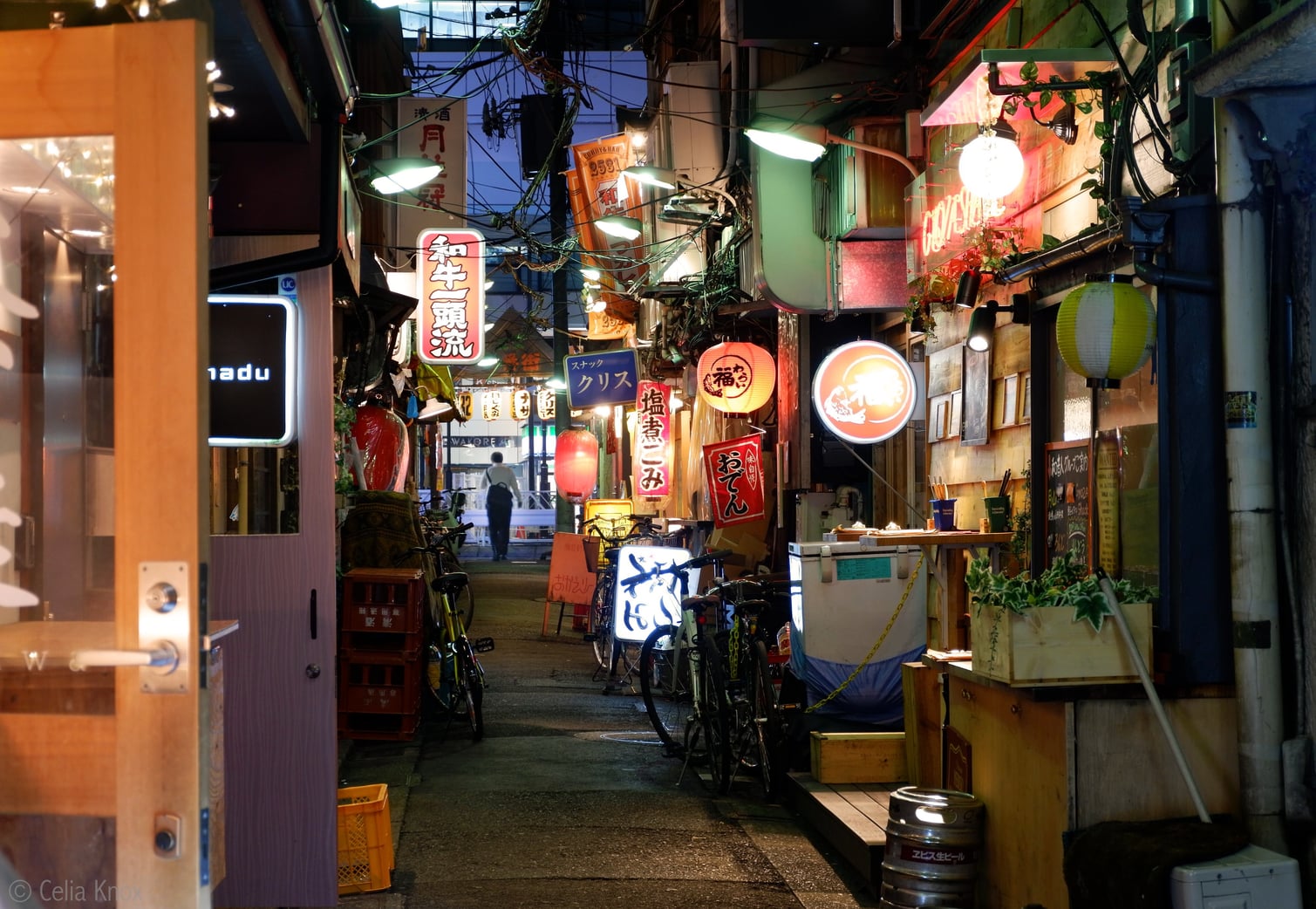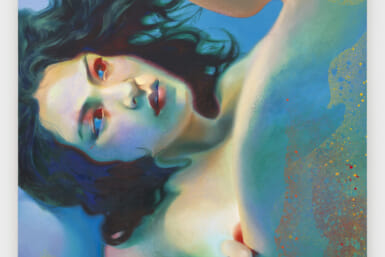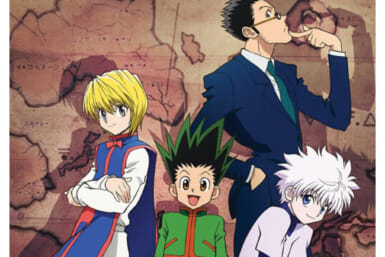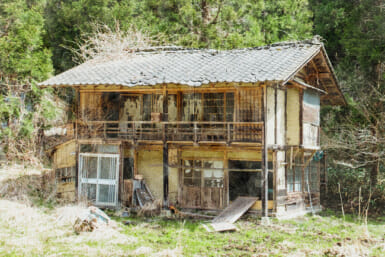It’s a warm, spring day as the Setagaya Line snakes its way through the quiet, residential streets of Setagaya Ward. There are 10 stops in total, each a mere platform for people to wait on. The compact, two-carriage tram might be just a regular commute for locals, but it also gives sightseers a rare glimpse of Tokyo away from the crowds.
The Setagaya Line is one of two surviving tramways in Tokyo. Its original tram line was set up in 1907, connecting Shibuya with Tamagawa. The network was extended over the years but all that’s left today is the five kilometre stretch between Sangenjaya and Shimotakaido.
Much of the Setagaya Line surprisingly remains off the tourist trail, but with a multitude of things to do, see and eat, it is a fun excursion for train lovers and visitors alike. Tickets are for single rides, no matter the distance: ¥150 for adults and ¥80 for children. One-day all-you-can-ride tickets are also available from the Sangenjaya, Kamimachi and Shimotakaido station offices for just ¥330 for adults and ¥170 for children. Jump aboard with us and discover some of the highlights along the way.
Start at Sangenjaya
Vibrant, eclectic, intimate, and just four minutes by train from Shibuya, Sangenjaya is a town with a long history. Beginning as an area with three tea houses, travelers and warlords stopped here on their way in or out of Edo city. Today, Sangenjaya sits beneath a towering expressway, offering a fascinating mix of old and new.
The star attractions of the neighborhood are its yokocho – narrow alleyways crammed with tiny bars and restaurants. Best visited at night but just as alluring by day, Suzuran-dori and Sankaku Chitai (“triangle area”) transport visitors back to Japan’s post-war days, a time full of excitement and rapid growth as the country got back on its feet.
Another highlight is Carrot Tower, named as such by elementary school students for its orange exterior. From the 26th floor, an observation deck gives an amazing view of western Tokyo with Mt. Fuji peeking over the horizon. A restaurant also offers a place to sit down and enjoy a meal with a beautiful view of Tokyo’s skyline.
Stop Off at Shoin-Jinjamae
After soaking up Sangenjaya’s nostalgic atmosphere, it’s time to hop on board the Setagaya Line. Passing through Nishi-Taishido and Wakabayashi, we come to Shoin-Jinjamae Station. The narrow main street is always buzzing with activity, and the community appears close-knit and friendly.
Right next to the station, you’ll find Boulangerie Sudo offering a scrumptious array of breads and pastries baked by award-winning chefs. Towards Setagaya-dori, Aloha Baby serves up some of the city’s best Hawaiian food. Their signature dish is a delicious garlic butter steak on rice. On the northern side of the station is the trendy All About My Croquette, known for its unique fillings – green curry croquette, anyone?
Heading further north on the main street will bring you to the place that lends its name to the station: Shoin Jinja Shrine. Its entrance marked by a bold, black torii gate, Shoin Jinja is particularly popular in spring when the cherry blossoms bloom and in late October when its annual festival is held. The shrine is dedicated to Shoin Yoshida, a political reformer who educated prominent samurai in the mid-1800s and was executed at the age of just 29. You can visit his tombstone in the cemetery adjacent to the shrine.
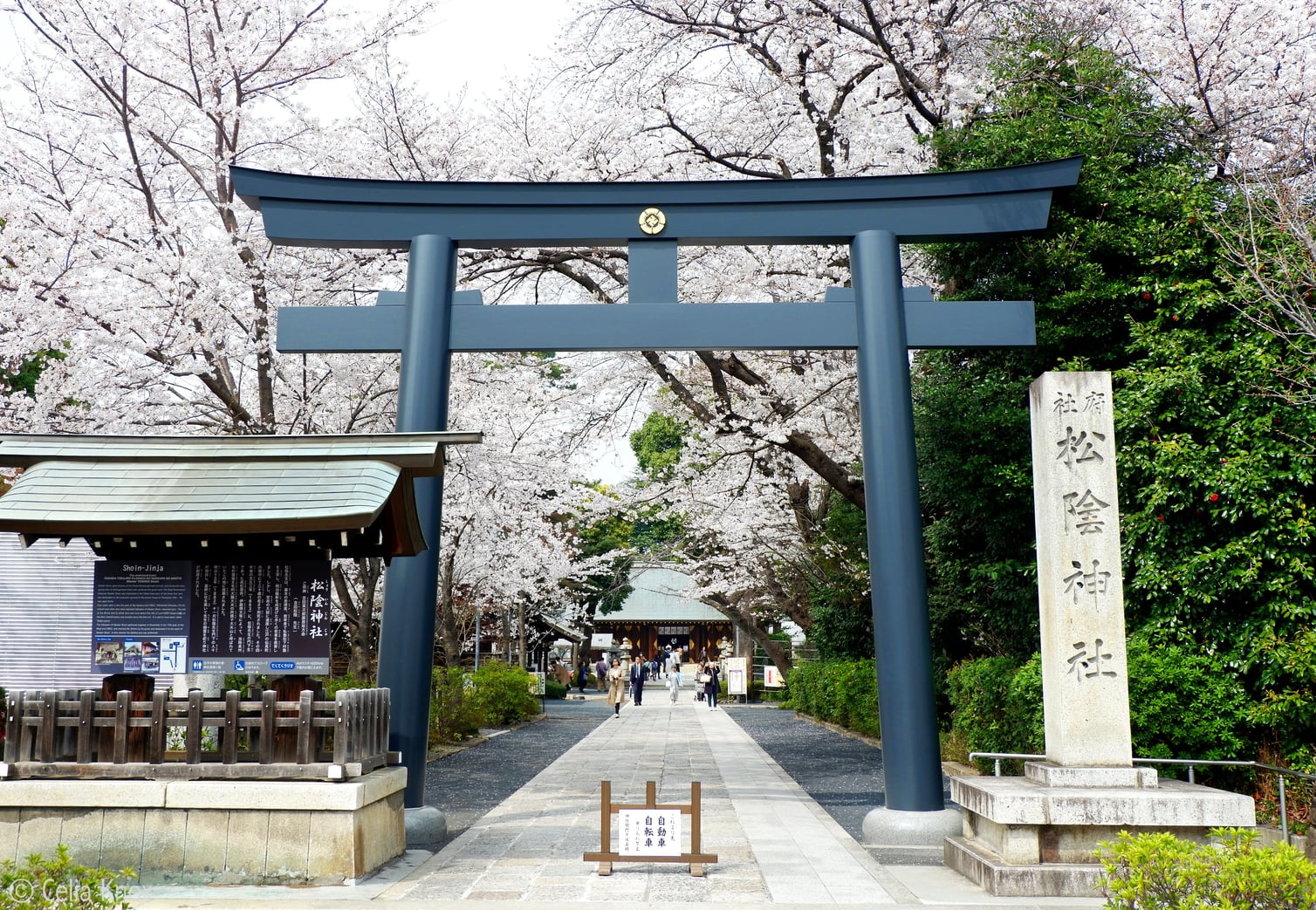
Shoin Jinja Shrine
Next Up, Kamimachi
Passing through Setagaya, the next stop is Kamimachi, home of the Boro Ichi. This popular flea market has been held every winter for roughly 440 years. Thousands of bargain hunters pack the streets on December 15 and 16, and January 15 and 16, looking through hundreds of tiny stalls selling everything from samurai swords to vintage kimono to bonsai. It’s one of the biggest events of the year in Setagaya Ward.
Visitors can get a glimpse of the Edo Period year-round at the Setagaya Magistrate’s Mansion (1-29-18 Setagaya). This well preserved thatched-roof farmhouse is an extremely rare sight in Tokyo. The cultural and historical museum also displays fascinating artefacts, miniature models of Setagaya as it used to be, and more.
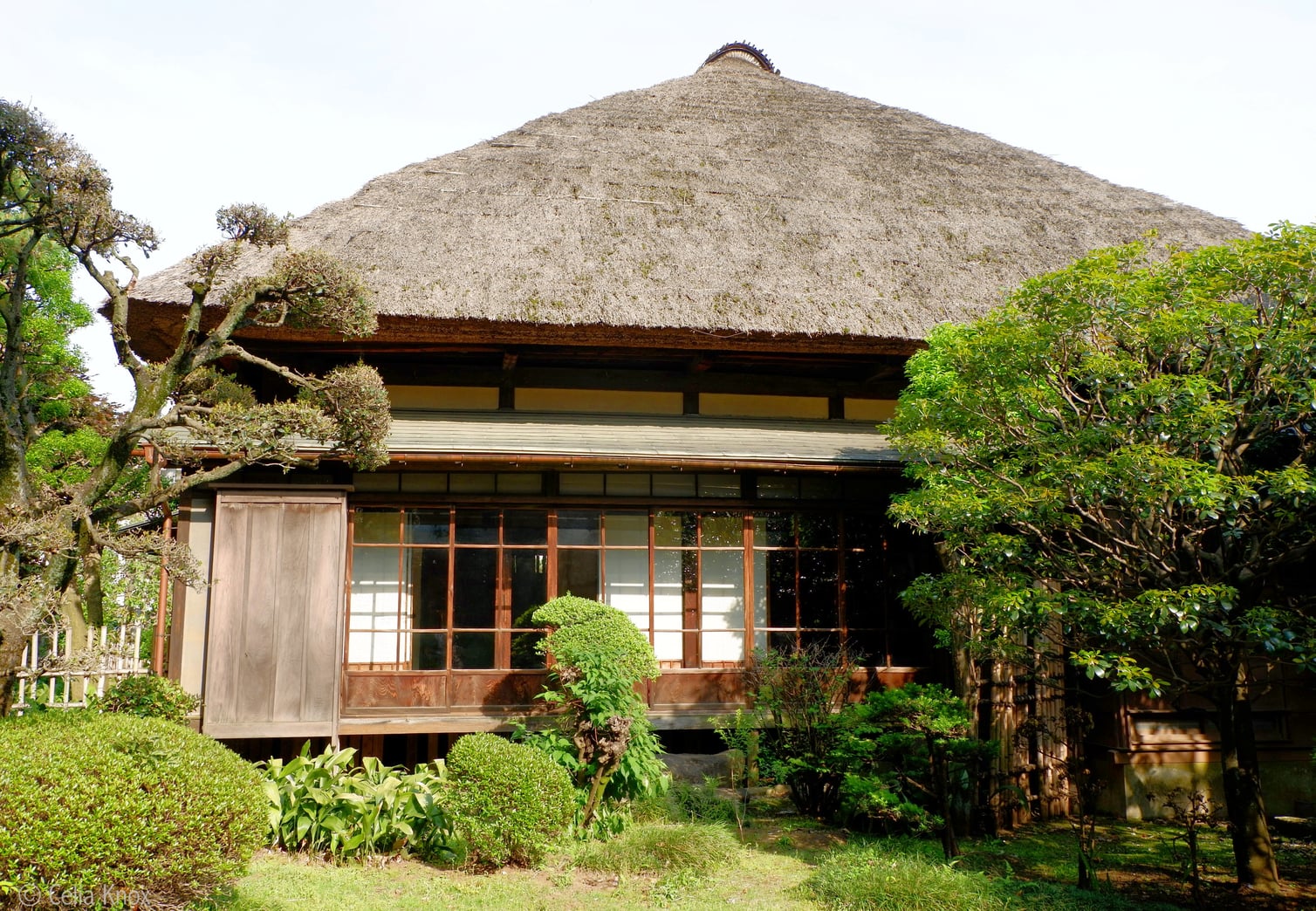
Setagaya Magistrate’s Mansion
Discover Miyanosaka
Back on the train, we come to Miyanosaka Station where there is an antique tram that sits as a museum piece. The whole carriage is like a time capsule from the 1920s.
Walking west from the tracks will take you to Setagaya Hachiman Shrine. Each September, a group of amateur sumo wrestlers from the Tokyo University of Agriculture sumo club take part in an autumn festival. Spectators keenly look on as the priest performs rituals and the wrestlers take turns competing in bouts. It’s a unique opportunity to see a tournament like this.
To the east of the tracks is by far the most well-known spot along the entire Setagaya Line: Gotoku-ji (2-24-7 Gotokuji, Setagaya). This temple has significantly increased in popularity among foreign tourists in the past few years, with the main drawcard being a wonderfully strange sea of beckoning cats. Gotoku-ji has been the home of the maneki neko (lucky cat) since the Edo Period when a white cat apparently saved a warlord from a dangerous storm by beckoning him inside the temple. The cat became a symbol of good luck and its legend lives on in the statues.
Rather than return to Miyanosaka Station, it’s a nice walk up to Yamashita Station. Among the handful of stores, Iron Coffee is making its mark on the Tokyo coffee scene. The owner of this hole-in-the-wall establishment serves his coffee in random mugs, and there are no tables, so it feels like you’ve been welcomed into his home kitchen.
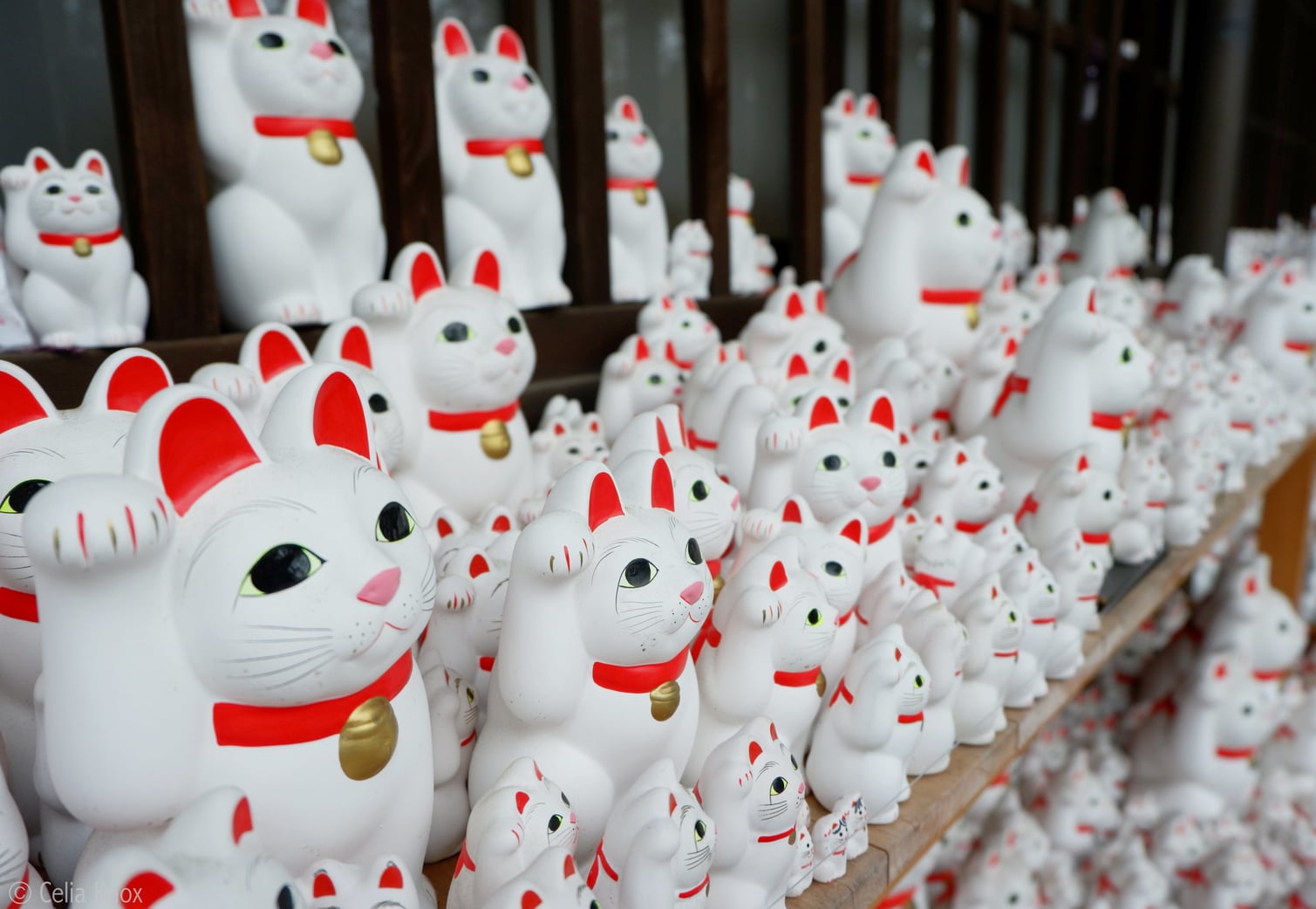
Maneki Neko at Gotoku-ji Temple
Stroll Around Shimo-Takaido
Heading north past Matsubara, we come to the final stop on the line. Similar to Sangenjaya, Shimo-Takaido is a bustling commercial district, though with various schools and universities in the area, it has a slightly younger crowd.
Down a side street running parallel to the Keio Line is the inconspicuous Shimo-Takaido Cinema. This isn’t your regular movie theater. The seats are wide and comfy and they have just one screen showing up to four movies a day — a mix of Japanese, Hollywood and foreign movies.
Strolling down the main street, you will pass an overwhelming number of cafés and eateries — perhaps the result of this being a university town. Going to the end of the shopping area will bring you to Pâtisserie Noliette. Beautiful cakes, chocolates and pastries fill the glass shelves. Order downstairs in the store and eat upstairs in the charming café.
We can’t think of a sweeter way to end your day exploring the Setagaya Line.
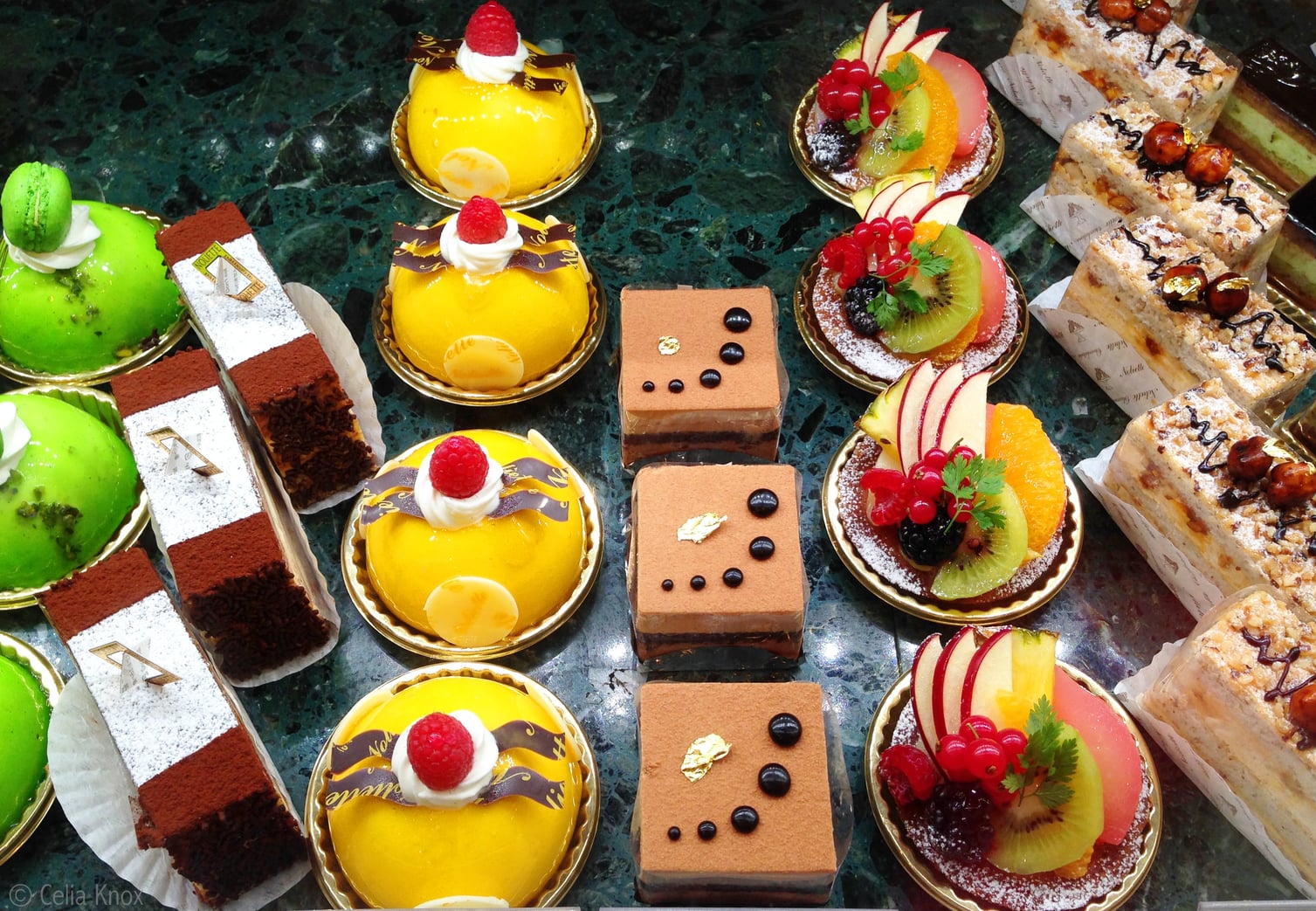
Pâtisserie Noliette

